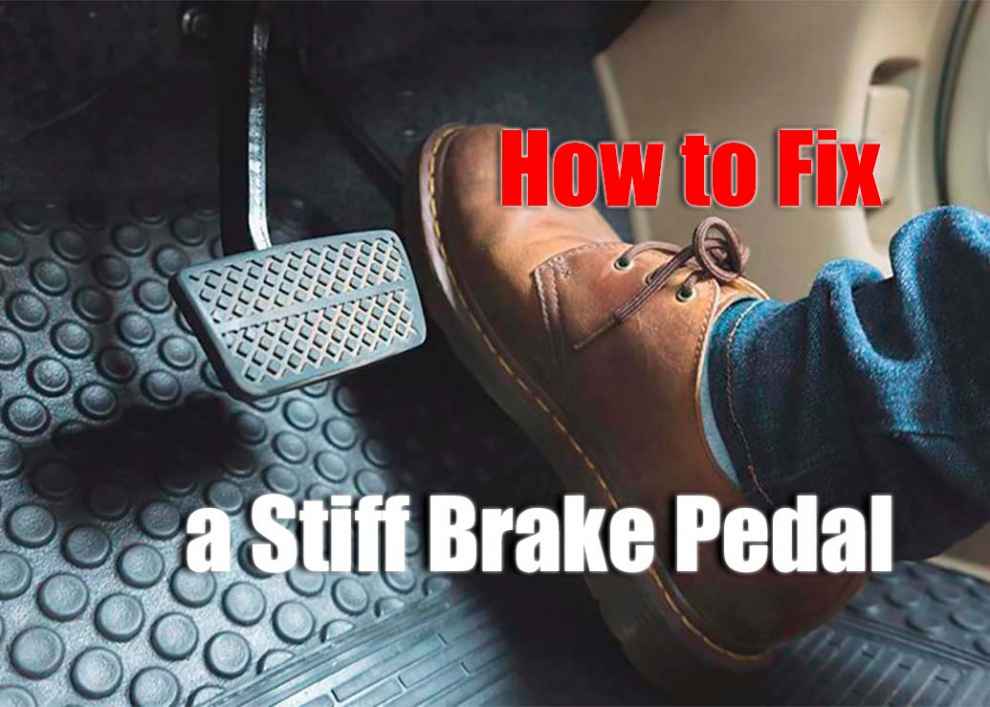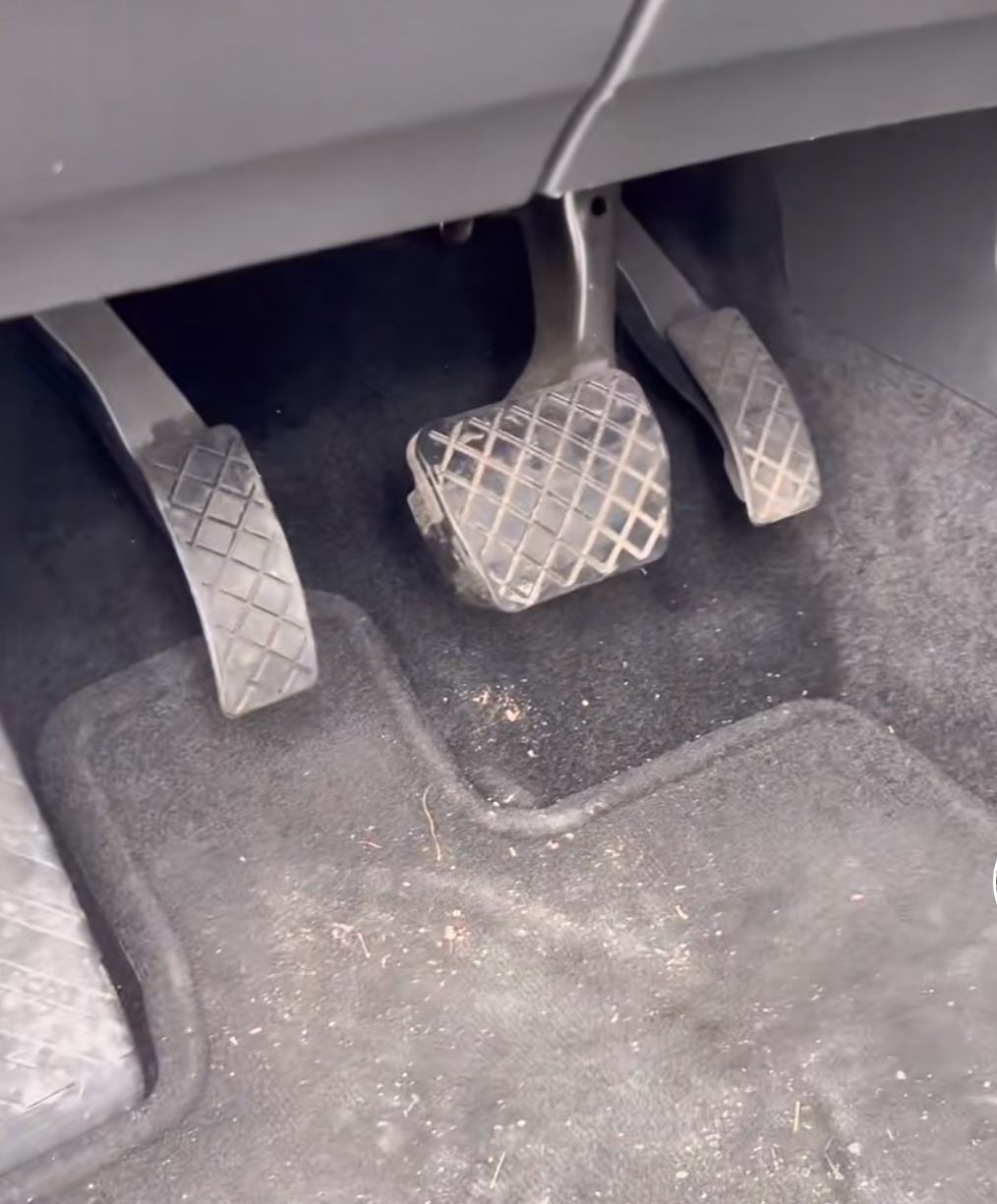Having a stiff brake pedal can be very alarming and potentially dangerous. If you have a stiff brake pedal that is hard to push down, it could be caused by many different things. From air in the brake line to leaking brake fluid or even a malfunctioning master cylinder, there are many potential issues that can cause your brakes to feel tight. Understanding the root of the problem is key to fixing such an issue. Luckily, you can take some simple steps to properly diagnose and repair your brake issue to get back on the road safely. In this article, we’ll discuss the causes of this problem and provide a step-by-step guide on how to fix stiff brake pedal quickly and efficiently. So, if your car’s brakes are tight or unresponsive, read on for tips on fixing them up fast!
Reasons for a Stiff Brake Pedal
A stiff brake pedal can be due to various vehicle braking system issues. Here are some common reasons:
-
Vacuum Problems: Most modern cars use a vacuum booster to provide power assist to the braking system. A leak or malfunction in this booster can lead to a loss of the power assist, making the brake pedal hard to press.
-
Bad Brake Hose: A brake hose that has become clogged or is internally damaged can restrict the flow of brake fluid, which can cause the pedal to feel stiff.
-
Caliper Issues: If a brake caliper is not sliding correctly because of rust or a lack of lubrication, it can make the brake pedal harder to press.
-
Master Cylinder Failure: The master cylinder is where the brake fluid gets pressurized. Problems with the master cylinder can lead to a hard brake pedal.
-
ABS System Malfunction: The ABS is designed to prevent the wheels from locking up, but if there’s a problem with this system, it might manifest as a harder brake pedal.
-
Brake Line Obstruction: Any blockage in the brake lines can prevent the proper flow of brake fluid, leading to increased pedal stiffness.
-
Overfilled Brake Fluid: Adding too much brake fluid to the system can cause issues because it does not compress, leading to a firm pedal feel.
-
Air in the Brake Lines: The presence of air in the brake lines can lead to a stiff brake pedal since air is compressible, in contrast to brake fluid, which affects the hydraulics of the braking system.
-
Worn or Incorrect Brake Pads: If the brake pads are not the correct type for the vehicle or are overly worn, they may not compress properly when the brake pedal is applied, leading to a stiffer pedal.
Diagnosing the Problem
To diagnose a stiff brake pedal, you should first determine if the problem is only present in one wheel or both. If you feel a difference when pressing on each side, that could indicate an issue with the caliper or master cylinder. If both pedals are hard to push down, there may be an issue with the brake lines or fluid level. Next, inspect the brake hoses and lines for signs of wear or damage and check for any blockages. It’s also important to check that there is no air leaking into the system, which can cause a hard pedal and reduce braking performance. Finally, you should verify that all components in the braking system, such as pads, rotors, and calipers, are correctly installed and functioning properly. After you have finished these inspections, you can address the issue of your stiff brake pedal. If you’re wondering why your brake light is on, it could be related to the issues you’ve identified, so it’s essential to investigate further. Also, read our guide on Why Is My Brake Light On to understand common reasons for this warning indicator.
Fixing a Stiff Brake Pedal Due to Rust, Corrosion, or Wear
Once you have determined that rust, corrosion, or wear is causing your stiff brake pedal issue, it’s time to start fixing it! Take off both wheels from each side to take out both wheel cylinders and inspect their condition more closely. If they look worn out, replace them immediately with new parts before repairing them. You will also need new gaskets and rubber seals when replacing them since they are susceptible to becoming brittle over time due to higher temperatures produced by braking friction heat inside them. Once all new parts are securely secured inside their rightful places, make sure they are tightly sealed before proceeding with repairs by using silicone grease around every part, which will prevent water from accumulating inside them again, which could cause problems later down the road if not taken care off now!
Fixing a Stiff Brake Pedal Due to Air in the Lines or Low Fluid Level
If air or low fluid levels are causing your brake pedal to be stiff, then it’s time to start bleeding your brakes. This process involves removing all the existing brake fluid from the system using a special hand-held vacuum pump with a clear tube. Place the other end of the tube into an empty container and start pumping until all the old fluid is gone from each caliper and wheel cylinder. Once that’s done, fill them up again with fresh brake fluid until they’re all full before reinstalling them back onto each side of your vehicle. You will need someone else’s help for this process since you will need one person to continuously pump while another watches out for any air bubbles entering the system, as well as keeping an eye on levels inside each caliper wheel cylinder! If you’re looking to upgrade your Jeep Grand Cherokee’s brake system, consider researching the Best Brake Pads for Jeep Grand Cherokee to improve your vehicle’s braking performance.
Conclusion
A stiff brake pedal can be a terrifying and potentially dangerous problem. However, it can be easily fixed with the right knowledge and tools. From rust, corrosion, or wear to air in the lines or low fluid levels, there are many potential causes for this issue. To begin diagnosing and fixing such an issue, we recommend inspecting all braking system components, from the brake hoses to the calipers, to identify what might be causing the problem. If you find rust or wear has caused your brakes to seize up, replace all necessary parts before filling them with fresh fluid. If air bubbles are present in the system, you must bleed your brakes until they are completely full of new liquid before reinstalling them back onto their rightful places! Ultimately, we hope this article has provided enough information and instructions on fixing a stiff brake pedal quickly and correctly!

 Master Cylinder Failure: The master cylinder is where the brake fluid gets pressurized. Problems with the master cylinder can lead to a hard brake pedal.
Master Cylinder Failure: The master cylinder is where the brake fluid gets pressurized. Problems with the master cylinder can lead to a hard brake pedal.
Add Comment